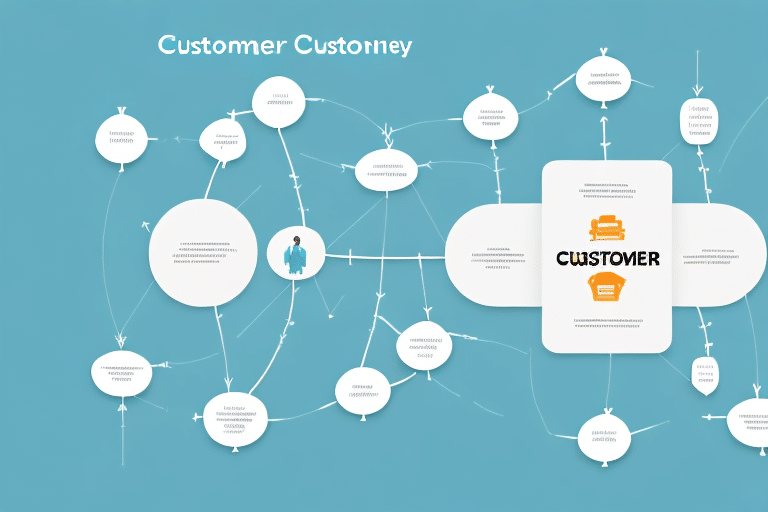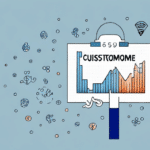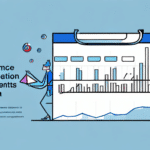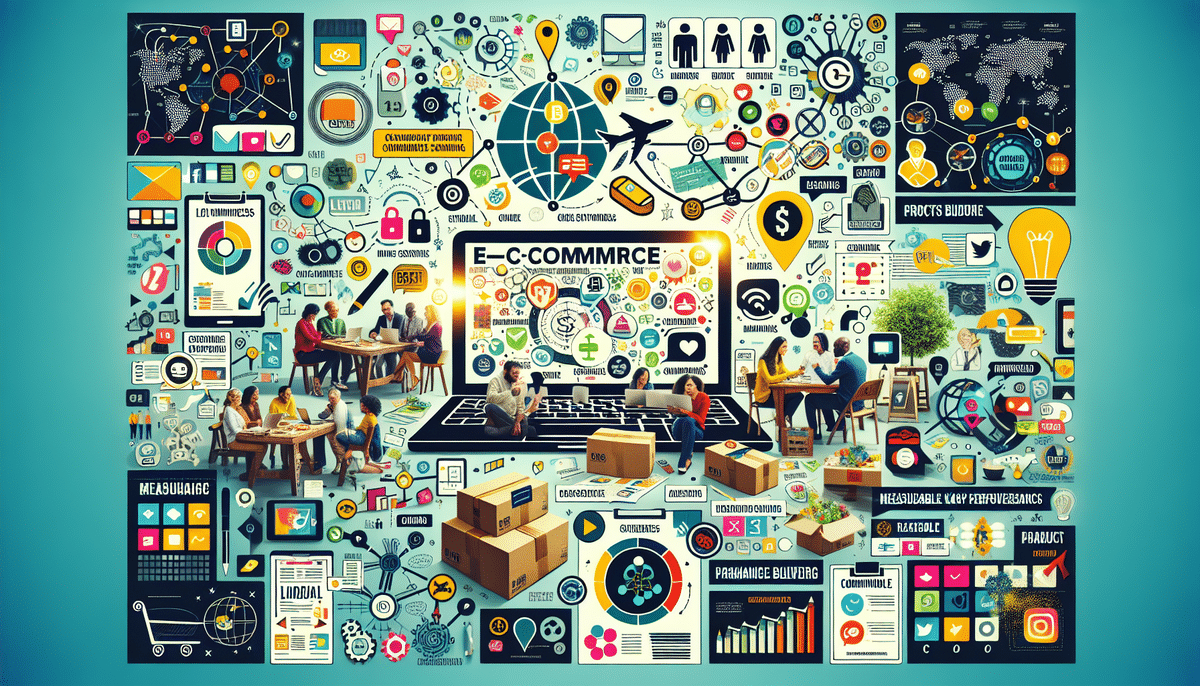Optimizing Customer Retention Strategies for Maximum Results
As a business owner, your primary goal is to attract new customers and increase your revenue. However, customer retention is equally important. Retaining your existing customers is more cost-effective than acquiring new ones, and it also leads to customer loyalty and brand advocacy. In this article, we’ll explore the importance of customer retention in business and how you can optimize your retention strategies to achieve maximum results.
The Importance of Customer Retention in Business
Customer retention refers to a company's ability to retain its customers over a specified period. High retention rates are indicative of satisfied customers and a strong relationship between the customer and the business. According to a Harvard Business Review study, increasing customer retention by just 5% can increase profits by 25% to 95%. This underscores the critical importance of focusing on strategies that keep customers coming back.
Cost-Effectiveness of Retention Over Acquisition
Acquiring new customers typically costs five to seven times more than retaining existing ones. The expenses associated with marketing, sales, and onboarding make customer acquisition a significant investment. In contrast, retaining customers often requires less financial outlay and leverages existing relationships to encourage repeat business.
Enhancing Brand Advocacy
Loyal customers are more likely to become brand advocates, providing referrals and positive reviews that can attract new customers organically. This word-of-mouth marketing is invaluable and can be more persuasive than traditional advertising methods.
Understanding the Customer Retention Process
Optimizing retention strategies begins with a deep understanding of the customer retention process. This involves several key steps:
Identifying Valuable Customers
Not all customers contribute equally to your bottom line. Identifying your most valuable customers helps in allocating resources effectively to retain those who provide the highest value.
Understanding Customer Needs and Pain Points
By understanding what your customers need and the challenges they face, you can tailor your products or services to better meet their expectations, thereby enhancing satisfaction and loyalty.
Delivering Exceptional Customer Experience
Providing a seamless and positive experience at every touchpoint ensures that customers feel valued and are more likely to continue their relationship with your business.
Analyzing Your Current Customer Retention Rate
Before you can improve your retention strategies, it's essential to analyze your current customer retention rate. This metric indicates the percentage of customers you retain over a specific period and helps identify trends and areas for improvement.
Calculating Retention Rate
Retention Rate = [(Number of Customers at End of Period - Number of New Customers during Period) / Number of Customers at Start of Period] × 100
For example, if you start with 1,000 customers, gain 200 new ones, and lose 100, your retention rate would be 90%.
Identifying Improvement Areas
By analyzing retention rates, you can pinpoint specific periods where customer loss is significant and investigate underlying causes, such as product issues or poor customer service.
Identifying Key Factors That Affect Customer Retention
Multiple factors influence customer retention. Understanding these can help you develop targeted strategies to address potential issues:
- Product Quality: Ensuring your product meets or exceeds customer expectations is fundamental to retention.
- Customer Service: Responsive and effective customer support can significantly enhance customer satisfaction.
- Pricing: Competitive pricing without compromising quality helps in retaining price-sensitive customers.
- Ease of Use: User-friendly products and services encourage continued use and reduce frustration.
- Delivery Speed: Timely delivery of products or services can make a substantial difference in customer satisfaction.
Conducting Customer Surveys
Regularly conducting surveys helps gather direct feedback from customers about their experiences and satisfaction levels. Tools like SurveyMonkey or Qualtrics can facilitate this process.
Analyzing Customer Data
Leveraging customer data through analytics platforms can reveal patterns and trends in customer behavior, helping you anticipate their needs and preferences.
Developing a Customer-Centric Retention Strategy
A customer-centric retention strategy prioritizes the needs and preferences of your customers. This approach fosters loyalty and long-term relationships. Key elements include:
Personalized Customer Service
Providing personalized solutions and addressing individual customer concerns makes customers feel valued. Implementing CRM systems like Salesforce can aid in managing customer interactions effectively.
Exclusive Offers and Rewards
Offering exclusive discounts, early access to new products, or loyalty programs can incentivize customers to stay engaged with your brand.
Building Emotional Connections
Creating a sense of community through social media engagement, personalized communication, and shared values enhances the emotional bond between the customer and the brand.
Personalizing Your Approach to Customer Retention
Personalization tailors the customer experience to individual preferences, increasing satisfaction and loyalty.
Using Customer Data for Personalization
Analyzing purchase history, browsing behavior, and feedback allows you to create personalized offers and recommendations. For instance, Shopify highlights the effectiveness of personalized marketing in increasing conversion rates.
Consistent Multichannel Experience
Ensuring a seamless experience across all channels—such as your website, mobile app, and customer service—reinforces your brand identity and builds trust.
Leveraging Technology to Enhance Retention Efforts
Technology plays a pivotal role in optimizing customer retention strategies by automating processes and providing valuable insights.
Customer Relationship Management (CRM) Systems
CRM systems like HubSpot or Zendesk help track customer interactions, manage relationships, and identify opportunities for engagement.
Automated Marketing Tools
Tools like Mailchimp and ActiveCampaign enable automated email campaigns that nurture customer relationships based on their behavior and preferences.
Analytics and Feedback Tools
Utilizing analytics platforms such as Google Analytics and feedback tools like Hotjar provides insights into customer behavior and satisfaction, guiding strategic decisions.
Creating a Positive Customer Experience at Every Touchpoint
A positive customer experience is essential for retention. Ensuring that every interaction with your business is smooth and enjoyable can significantly impact customer loyalty.
Streamlined Onboarding Process
A seamless onboarding process helps customers understand how to use your product or service effectively, reducing frustration and increasing satisfaction.
Responsive Customer Support
Providing timely and effective support through multiple channels—such as live chat, email, and phone—ensures that customer issues are resolved promptly.
Consistent Quality Delivery
Maintaining high-quality standards in your products or services reinforces customer trust and encourages repeat business.
Measuring the Success of Your Customer Retention Strategy
Regularly evaluating the effectiveness of your retention strategies is crucial for continuous improvement.
Key Metrics to Monitor
- Retention Rate: Measures the percentage of customers retained over a period.
- Churn Rate: Indicates the percentage of customers lost during a specific timeframe.
- Customer Lifetime Value (CLV): Estimates the total revenue a business can expect from a single customer account.
- Net Promoter Score (NPS): Gauges customer loyalty by measuring the likelihood of customers recommending your business to others.
Utilizing Feedback for Improvement
Incorporating customer feedback into your strategies helps address pain points and enhances the overall customer experience. Tools like Typeform can be used to gather detailed feedback.
Addressing Common Challenges in Customer Retention
Customer retention comes with its set of challenges. Proactively addressing these obstacles can help maintain and improve retention rates.
Intense Competition
In highly competitive markets, differentiating your brand through unique value propositions and exceptional customer service is essential to retain customers.
Changing Consumer Behavior
Staying attuned to shifts in consumer preferences and adapting your offerings accordingly can prevent customer attrition.
Customer Churn
Understanding the reasons behind customer churn—whether it's due to product issues, pricing, or service dissatisfaction—allows you to implement targeted retention measures.
Best Practices for Maintaining Long-Term Relationships with Customers
Building long-term relationships with customers ensures sustained loyalty and advocacy. Here are some best practices:
Regular Engagement
Consistently engaging with customers through newsletters, social media, and personalized communications keeps your brand top-of-mind.
Personalized Rewards and Incentives
Implementing loyalty programs that offer personalized rewards based on customer behavior fosters a sense of appreciation and encourages ongoing business.
Demonstrating Appreciation
Showing genuine appreciation through thank-you notes, exclusive offers, or special events can strengthen the emotional bond with your customers.
The Role of Communication in Successful Customer Retention
Effective communication is the backbone of customer retention. Clear, consistent, and meaningful interactions build trust and loyalty.
Regular Updates and Newsletters
Keeping customers informed about new products, services, or company news helps maintain interest and engagement.
Proactive Issue Resolution
Addressing potential issues before they escalate demonstrates your commitment to customer satisfaction and reliability.
Personalized Communication
Tailoring communications to individual preferences and behaviors ensures that interactions are relevant and valued by customers.
Celebrating and Rewarding Loyal Customers
Recognizing and rewarding customer loyalty reinforces positive behavior and encourages continued patronage.
Exclusive Discounts and Offers
Providing loyal customers with special discounts or early access to sales makes them feel valued and incentivizes repeat purchases.
Loyalty Programs
Implementing structured loyalty programs that offer points or rewards for ongoing patronage can significantly boost retention rates. Platforms like LoyaltyLion can assist in creating effective programs.
Personalized Rewards
Offering rewards that align with individual customer preferences enhances the perceived value of the loyalty program.
Staying Ahead of the Competition with Effective Retention Strategies
Effective retention strategies not only keep your current customers but also position your business favorably against competitors.
Differentiating Your Brand
Offering unique value propositions and exceptional customer experiences sets your brand apart in a crowded marketplace.
Continuous Improvement
Regularly updating your products, services, and customer engagement methods ensures that you meet evolving customer needs and stay relevant.
Leveraging Customer Insights
Using data-driven insights to inform your strategies allows you to anticipate trends and adapt proactively, maintaining a competitive edge.
The Future of Customer Retention: Trends and Predictions
The landscape of customer retention is continually evolving, influenced by technological advancements and changing consumer behaviors. Staying abreast of these trends can help you adapt and refine your strategies effectively.
Personalized and Omnichannel Experiences
Customers expect seamless and personalized interactions across all channels. Integrating data from various touchpoints enables a cohesive and tailored experience.
Predictive Analytics
Utilizing predictive analytics to anticipate customer behavior and proactively address potential churn can enhance retention efforts. Tools like Tableau and Power BI are instrumental in implementing these analytics.
Artificial Intelligence and Automation
AI-powered chatbots and automated communication systems can provide timely and personalized responses, improving customer satisfaction and freeing up resources for more strategic initiatives.
Focus on Sustainability and Social Responsibility
Modern consumers are increasingly valuing companies that prioritize sustainability and social responsibility. Demonstrating commitment to these areas can strengthen customer loyalty.
In conclusion, optimizing your retention strategies is essential for the long-term success of your business. By focusing on your existing customers, delivering exceptional customer experiences, and leveraging technology to personalize and automate your efforts, you can improve your retention rates, drive customer loyalty, and stay ahead of the competition. Implement the strategies and best practices outlined in this article to enhance your retention efforts and achieve maximum results.




















